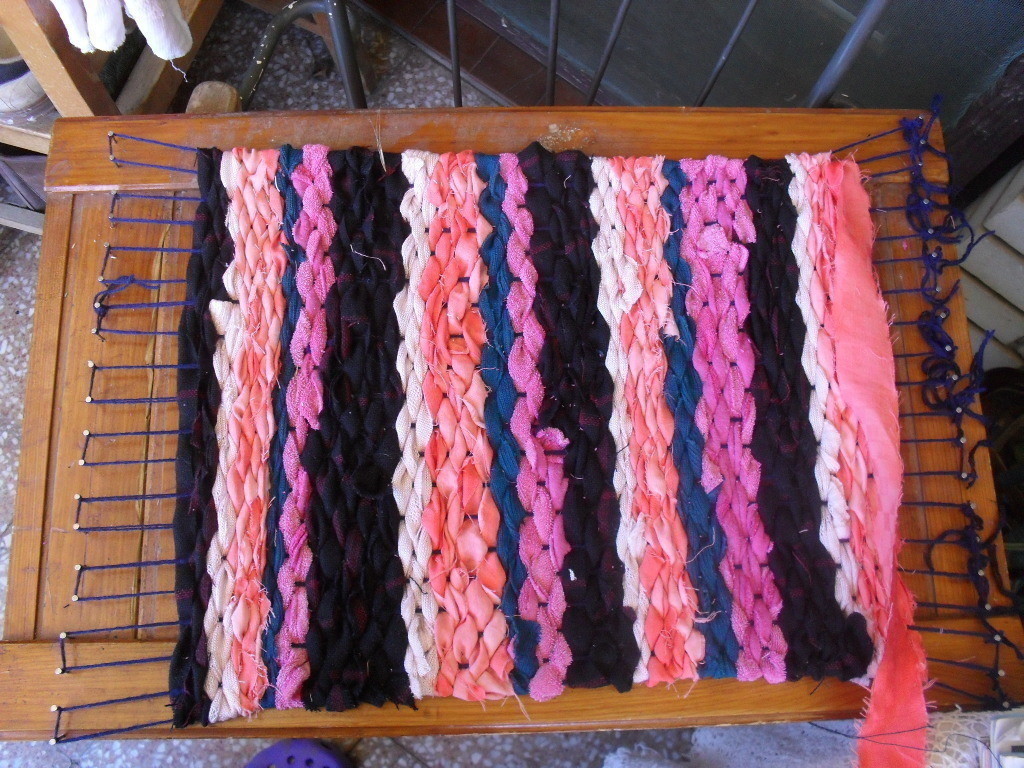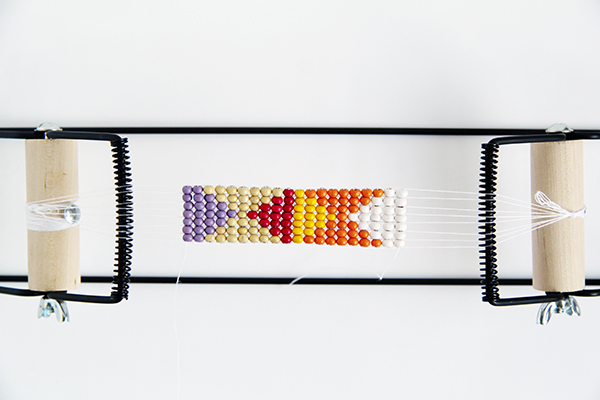
The loom working space will be about 6 inches. The pattern should measure out to 3.15 inches in length, so you will need to adjust the rail up to the third notch from the original point.
#Bead loom tutorial free#
If you don’t have these specific beads on hand, feel free to use beads that you already have. Grab your beading mat and separate your Miyuki beads.
#Bead loom tutorial download#
If you don’t have a printer, you can download it to your phone and keep it nearby to follow along.

The weft threads allow you to secure your beads onto your bracelet.Īlright, now that we have the basics down let’s download the pattern (click here) and start!ĭownload and print the beading pattern. When you think of the word weft, remember that it means to weave. In short, warp threads are placed on a loom for the length of your project and the weft threads are attached to the needle. Understanding Warp & Weft Threads: If you’re already familiar with weaving, then you may already understand the difference between the two. It will eventually erase off, but it’s a quick fix to help you identify the parts especially the A side and B side. Quick note: It’s easy to forget the parts of the loom while you’re reading the directions, so I used a fine-tip sharpie to write the part names on my loom. As for round beads (donut-shaped), you’ll need to adjust your warp guide to the (B) Grooves with the horizontal lines pointing upward. So skipping a groove could help a triangle or peanut bead fit perfectly.īeading Sides: If you’re using cylinder beads for your projects, turn your warp guide to the (A) Grooves. That statement means that if you want to use a larger bead, it’s totally possible! All you need to do is adjust the warp threads to add more space for your bead to fit. The directions state that “Other bead sizes can be used by changing the intervals between the warp threads and tightening the weft threads”.

I used a highlighter to go through and underline the important sections.Ĭhoosing beads: The Beading Loom works with 11/0 cylinder and round beads. It may look overwhelming at first, but I promise it’s not as difficult as you may think. First, take out your instruction sheet and get familiar with the parts and instructions. I want to go over a few things before we begin beading.
#Bead loom tutorial how to#
How to use your loom: Ok, so if you’re new to the Beading Loom world, welcome to the party! You will enjoy working with this tool as you learn how to use it.

Bugle beads are long tubular looking beads and are most commonly used in beaded fringes.Beading on a loom is a wonderful way to unwind and create something beautiful.

They have rounded edges and look best at the end of a beaded fringe. Drop beads are larger beads that look similar to a drop of liquid.They have six cuts in them, giving them a more sparkly look. Hex beads are a combination of cylinder beads and cut beads.This gives them a shimmering or sparkling effect similar to a gem. Cut beads are similar in shape to seed beads however, they have one or more cuts on the side.These are the best beads to use if you want to achieve uniform and smooth beadwork. Cylinder beads are uniform in shape and typically have straight sides and large holes.They are typically described as small glass beads. Seed beads are the most common type of beads.For example, certain stitches work better with certain beads. In order to select the appropriate type of bead, you need to determine the project you are creating. They come in a number of different colors, shapes, and sizes. There is also a huge variety of beads available for bead weaving.


 0 kommentar(er)
0 kommentar(er)
